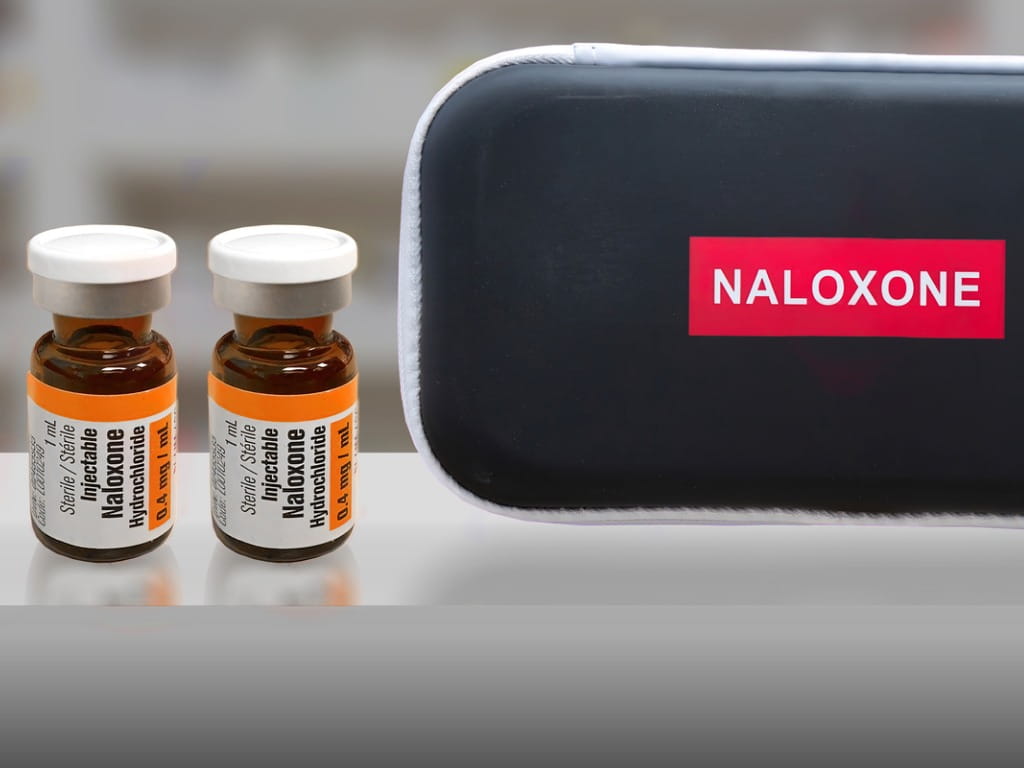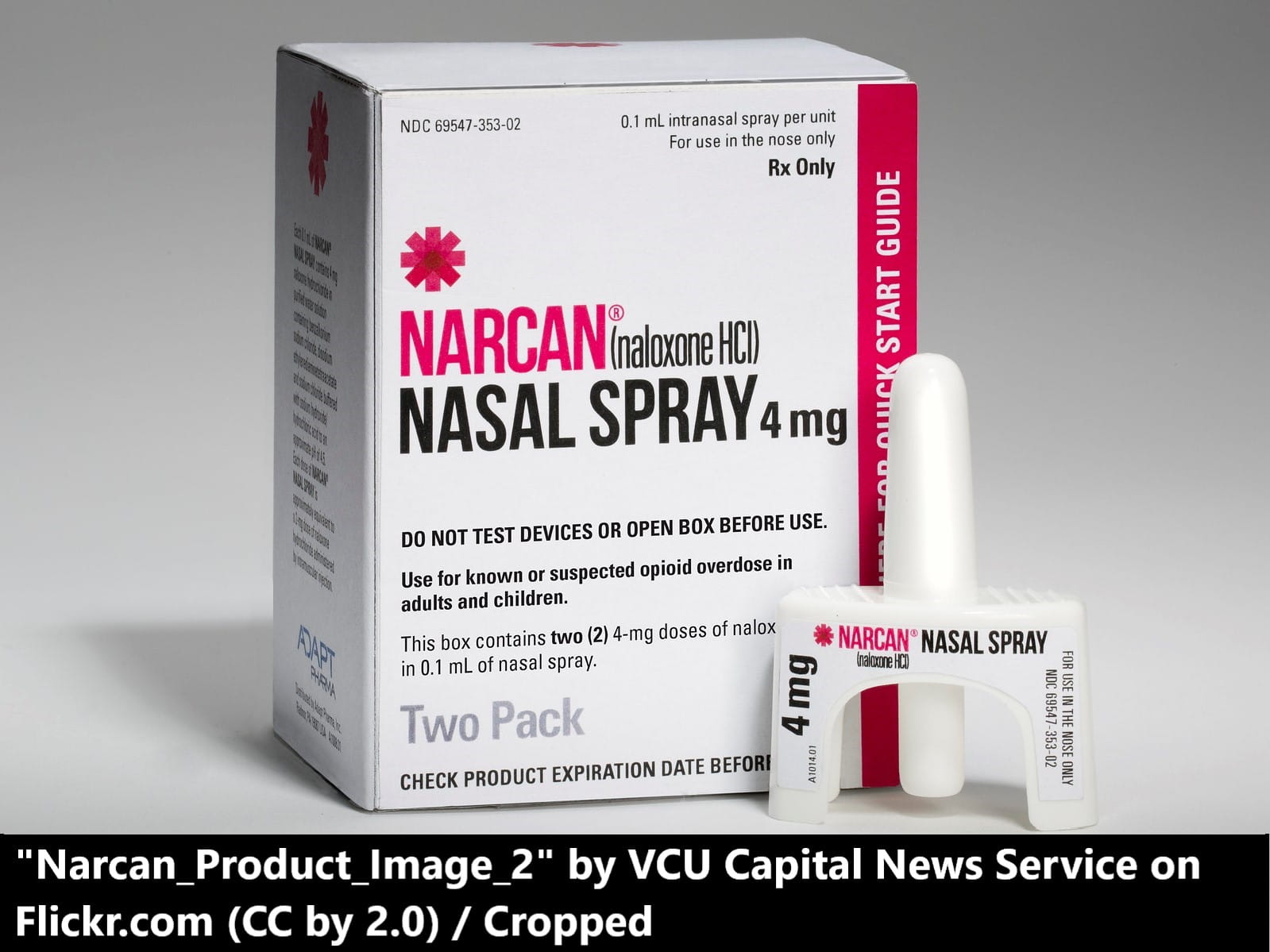What is Naloxone?

The Bottom Line
Naloxone (Narcan®), the antidote for opioid overdose, is a safe and effective way of preventing respiratory failure and death from opioid poisoning. Naloxone can be given by health care workers or bystanders to people with suspected opioid poisoning.

The Full Story
Opioids are commonly prescribed, strong medications that help with pain management. Examples of prescription opioids include morphine, codeine, and fentanyl. Other opioids, including heroin, are considered to be illicit drugs as they have no accepted medical use. These drugs are sometimes also referred to as “narcotics”. Opioids are often prescribed in medical settings for pain relief, but some people also use these drugs recreationally to “get high”. This is also referred to as “substance abuse”. Both prescription opioid drugs like oxycodone/acetaminophen (Percocet®) or hydrocodone/acetaminophen (Vicodin®) and street drugs like heroin can be abused in this way. People who abuse opioids commonly inject the drug into a vein or under the skin, take pills that were not prescribed to them, or insufflate (snort) the drug. When taken inappropriately or in high doses, opioids can decrease the ability to breathe enough air. This condition is called “respiratory depression” and it can be life threatening. If untreated, opioid-related respiratory depression can lead to cardiac arrest and death.
Opioids work by attaching to areas on the surface of cells called opioid receptors. Different opioids have different levels of attraction, or “binding affinity,” to these receptors. Naloxone works to reverse the symptoms of opioid overdose because it has a very high binding affinity for the opioid receptors, but it does not activate the receptors the way that opioids do. Naloxone displaces the opioid molecules that are bound to the receptors and blocks their effects. This causes rapid reversal of the respiratory depression and can be life-saving. Naloxone can be given as a nasal spray or an injection into the muscle by bystanders and first responders, or through injection into a vein by a health care professional.
Naloxone is a component of some opioid use disorder treatments that are given by mouth, like buprenorphine/naloxone (Suboxone®). Buprenorphine is a drug that acts at opioid receptors and is used to help people reduce their dependence on opioids. Because naloxone is not well absorbed by the gastrointestinal system, it does not counteract or reverse the effects of buprenorphine after oral administration. However, the presence of naloxone discourages buprenorphine users from dissolving the medication and injecting it into their veins, as the naloxone would immediately counteract the effects of the injected opioid.
There are two types of bystander naloxone devices available: nasal sprays used in the nose, and autoinjectors that deliver a dose into the muscle with a hidden needle. When you receive naloxone from the pharmacy, you can ask the pharmacist for instructions on how to administer it, or you can check the manufacturer’s website. In general, for a nasal spray, you will place two fingers on top of the device and lightly hold the plunger on the bottom of the device with your thumb without pushing it in. Then you place the tip of the device gently into the nose and push the plunger down all the way. Naloxone nasal sprays are one-use only, so be careful not to accidentally press the plunger before the spray is positioned in the nose. Autoinjectors vary in how they are administered, so it is best to check the instructions on the specific device you have; these may be printed directly on the device for ease of use. If the patient does not begin breathing within 2-3 minutes, a second dose should be administered if available.
Whenever naloxone is used, the patient should be evaluated by a healthcare professional. Naloxone’s effects can wear off before the effects of the opioid medications do, especially in large overdoses. This could lead to a relapse of the life-threatening respiratory depression. Because naloxone’s effects can wear off quickly, some patients may require a longer-acting intravenous (IV) infusion of naloxone that can only be administered in a hospital setting. While naloxone has minimal side effects, it can cause opioid withdrawal symptoms in people who use opioids regularly. Withdrawal symptoms may include nausea, vomiting, diarrhea, and a rapid heart rate. Naloxone use has also been linked to a lung condition called pulmonary edema, which happens when a person’s lungs fill with fluid. Affected individuals have difficulty breathing, and pink foamy secretions are often noticed around the mouth and nose. Pulmonary edema can be life-threatening, but it’s not clear whether it is caused by the naloxone directly or by the opioid overdose. No matter what the cause, emergency medical care is required for pulmonary edema.
If someone has developed unwanted signs or symptoms after exposure to an opioid medication or naloxone, or taken too much, reach out to Poison Control immediately to find out what to do. Get a fast personalized recommendation online or call 1-800-222-1222. Both options are free, confidential, and available 24 hours a day.
Joshua Drobina, RN, BSN
Certified Specialist in Poison Information
Poisoned?
Call 1-800-222-1222 or
Prevention Tips
- If you use opioids for therapeutic purposes or recreationally, you can obtain naloxone (Narcan) from your local pharmacy. Naloxone is available without a prescription in all 50 states and the District of Columbia.
- GetNaloxoneNow.org and Next Distro are free resources to train the public on how and when to administer naloxone in suspected opioid overdoses.
- NaloxoneForAll.org and Next Distro provide free naloxone by mail to people who are likely to be nearby when someone overdoses. A short training video is required to demonstrate safe use of the product.
This Really Happened
A patient in his 70’s accidentally took too much of his prescribed Vicodin® (hydrocodone/acetaminophen) and developed respiratory depression and low blood oxygen levels. While en route to the hospital, he was administered a dose of naloxone and his oxygen saturation returned to normal. In the hospital, his respiratory depression symptoms returned and he was administered a second dose of naloxone. His condition stabilized and he did not require further doses.For More Information
References
Renner, Levounis, P., & LaRose, A. T. (2018). Office-based buprenorphine treatment of opioid use disorder (Renner, P. Levounis, & A. T. LaRose, Eds.; Second edition.). American Psychiatric Association Publishing.
Photo Attribution: "Narcan_Product_Image_2" by VCU Capital News Service on Flickr (CC by 2.0) / Cropped from original
Poisoned?
Call 1-800-222-1222 or
Prevention Tips
- If you use opioids for therapeutic purposes or recreationally, you can obtain naloxone (Narcan) from your local pharmacy. Naloxone is available without a prescription in all 50 states and the District of Columbia.
- GetNaloxoneNow.org and Next Distro are free resources to train the public on how and when to administer naloxone in suspected opioid overdoses.
- NaloxoneForAll.org and Next Distro provide free naloxone by mail to people who are likely to be nearby when someone overdoses. A short training video is required to demonstrate safe use of the product.
